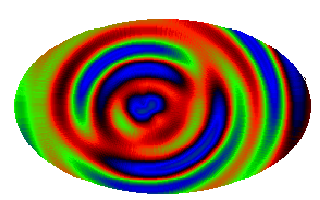



Richard is a lighting designer and director from Dartmouth,
Nova Scotia, Canada. He has a distinguished career in the
performance industry. Here is a look at that career:
Select a Topic, or Scroll
Down to Read All
Early Efforts
More Band Lighting
Disc Jockey Work
Concerts, Pageants, Fashion
Television and Video
Rockshow Lighting Course
Atlantic Illumination
MIANS and Beyond
Today
Organisations
Charitable Causes
Current Events
The genesis of Richard's involvement with stage lighting occurred at elementary school with his Grade Four Christmas pageant. He did not personally handle any lighting equipment, but took an interest in it at that time. He actually played a shepherd in that production but was more interested in what was happening off the stage than on. His final elementary school year (taken in a junior high school building) saw him painting scenery and doing stage work for Gilbert & Sullivan's Mikado.
In junior and senior high schools he worked on the lighting and with the technical crews for school events. These included assemblies, lectures, and Christmas and Winter Carnival specials. He also worked for two major school stage productions during that period: The Pirates of Penzance and The Pajama Game. Richard was lighting designer & director for the latter. By that time, he was head tech at the school.
|
Technical Crew Dartmouth High School Dartmouth, Nova Scotia 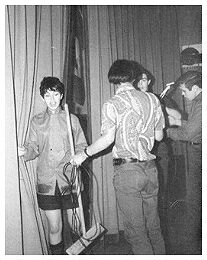
|
Richard, with cable in hand and back to
the camera, works with some of the crew
on Dartmouth High School's Gymnasium Stage.
The wheel at the upper right is part of
the mechanism for raising and lowering a
basketball net that hung in front of the
stage. Note the Canadian flag peeking
through the curtain opening.
|
During part of this era, he played bass in the band Sylvan for which he also operated the lights by using a foot controller. As his interest in lighting grew, he began to purchase some lighting and projection effects, as well as building equipment on his own. Because of becoming known for this, he was asked to help out with plays and events at churches and at schools other than his own by designing the lighting and supplying the necessary equipment. From there, he was asked to light recitals for local dance instructors or to provide them with his special effects.
Richard also improved on the popular noon hour recorded-music playing in his high school's audio visual auditorium by bringing in a larger sound system with lights, strobes and projected effects as additional entertainment. Now the students heard the music at live band levels accompanied by lights focused on the audience and a visual display on the walls. This was the first time it had been done to this level in the local area. (This auditorium has been upgraded, especially the stage, and is known today as Keating Hall.)
Near the end of Sylvan, Richard began to concentrate more on lighting. Before a year had elapsed after the breakup of this band, Richard was working regularly with a band called The Umbrella, but not as a bass player -- no, he was the group's "lighting guy"! After they disbanded, he began working with a Dartmouth band, The Move, and had improved upon the typical band lighting of the day by using 150- and 250-watt quartz PAR-38 lamps with theatrical gel wrapped around them. This gave his lighting brighter intensity and a wider colour range as compared to the pre-coloured, outdoor, 100-watt floodlights being used by other groups.
In addition, he built a number of his own lighting effects. The earliest was a mechanical strobe light. It consisted of a cooling fan which had attached to its blades an opaque disc except for one hole the size of a floodlight cut out near its rim. The disc would pass by the floodlight giving a blurred effect to the eye. Speed was controlled by the mechanical method of allowing the fan's motor hub to come in contact with the front of the box housing all this. No, it did not overheat. (-:
Richard incorporated a different twist on the idea by building a strobe light with two light sources. One each was positioned at 9 and 3 o'clock, and each was gelled a different colour so the device gave a blurred colour-flash effect on the band. Speed this time was controlled by an autotransformer. To out do his competitors, high-wattage photo studio lamps were used so as to produce much brighter colours.
He also made some light boxes using small, self-flashing coloured lights within that played against a diffused screen at the front of each box. They would appear to accompany music when a suitable song was selected that coincided with the flash interval of the lights.
His most unique ideas were those which were moving-light / moving-beam effects that manoeuvred images and beams of light in inventive ways. Although primitive by today's standards, they nevertheless predated usage of current moving-lights / moving-beams in the Atlantic Provinces by about two decades.
Used strictly for band and dance shows, there were
a number of variations, but below are descriptions
of the five main moving-beam effects and their variations.
Those not interested in these details may
skip farther down the page to More Band Lighting
The first effect used a four-way, screw-base socket as normally used at that time in a residential ceiling fixture. Essentially, it allowed four light bulbs to be screwed in with each facing a different direction. Richard used screw-base PAR lamps instead, and mounted the four-way socket onto a motor. This was set atop a stand used for an old kitchen stove oil-burner tank which allowed the light to be above floor level by about a metre and a half. Richard designed his own electrical contactor assembly, part of which actually consisted of a spent, rifle-bullet shell !
Four PAR 38 spot lamps similar to those used on lawns at Christmas time completed the assembly. These spots however, were 50% higher wattage, produced narrower beams than the lawn ones, and gave a "whiter" light. To add colour, each opposite pair was fitted with theatrical gel, typically two green and two orange. This gave a brighter, narrower light beam and used colours not available in the lawn versions. Later, Richard switched to lamps using dichroic filters which gave even brighter, and also purer, colour.
The motor turned the lamp assembly in a manner of the old-style, rotating emergency vehicle beacon. Speed was controlled by switching the motor off & on while running, and then later by an autotransformer. The latter allowed Richard to vary the voltage to the motor, and thus set a more constant speed. The lamps were controlled by a separate switch. This meant that the speed of the unit could be adjusted before the lights were turned on.
Typically, this effect was set behind the drum kit to give moving beams/colours around the stage behind the band and a silhouette of the drummer as each beam passed by and shone on his back.
A similar idea was incorporated in a unit utilising a three-sided, glass mirror setup. The mirrors were stood on edge and were arranged to be angled 60 degrees opposed to one another, then secured together. This formed an equilateral triangle of mirrors that was then placed upon a variable-speed turntable taken from an antique record player. Initially, a spot light was used to reflect off each mirror in turn as it rotated to face the light source. This sent a beam of light around the stage behind the band.
Later, Richard used a slide projector to direct images around the stage instead of a light beam. The main reason for this was to separate the effect from that of the first moving-light described above because they were too similar in operation and resulting look. Another way he made it be different from the first effect was to set the light or projection source at a lower height and allow the images to reflect upward to appear much higher over the band members' heads.
A different idea regarding reflection effects was his placement of mirror balls. Since the 1800s, a common dancehall effect has been the mirrored ball. Each ball consisted of a rigid sphere covered in small, flat, mirror squares. A strong, focused light was shone onto them to produce dots of light on surrounding surfaces. Balls were often motorised so as to produce moving dots. These balls were always hung above and centrally over a dance floor or band.
Richard, however, used a couple of boom mic stands to suspend a 300mm ball on either side of the drum kit. The height would have been about level to the drummer's shoulders. One spotlight from each side was projected downward onto each ball so that the dots were reflected upward onto the rear projection screen. When the balls were static, a starry background appeared behind. This looked great when blacklights gave a purple-ish, white glow to the screen -- but when a motor turned each ball, because of close screen proximity, the dots would quickly streak across it to give a dizzy, swirling effect. Because the two balls were some distance apart, these streaks would cross one another in a manner that further confused the eye.
Richard's most inventive ideas were two hand-operated effects. The first consisted of a simple polished sheet of flexible tin plate about half a metre wide. This was hand held and shone upon by a slide projector. The plate was flexed and angled by Richard, or more usually an assistant, to give a stretching, roving image on a screen behind the band -- in time with the music, of course.
A variety of other reflective devices were used in similar ways to the above. These included diffraction gratings to produce rainbow-coloured images, and also coloured reflectors & diffusers to further change the look of the effect.
A different variation of the hand-operated effect was done using a small square of heavy cloth on to which individual centimetre squares of mirror were glued in rows & columns. This was a commercial product that Richard adapted for his own special effects purposes. The material was originally intended to make mirrored clothing or objects. Richard used it in front of a slide projector fitted with a black slide that had been pierced by many, tiny pin holes. The slide was used as a pattern source, and because of the pin holes, multiple, narrow beams were focused on to the individual mirrors sewn on to the piece of cloth which was being hand held by its operator.
By manipulating this mirror fabric, the operator was able to send each beam in a different direction and thus project wildly-gyrating spots on to a screen or wall. Or, he or she could shoot multiple, random moving beams through fog or smoke when directed toward an audience from behind a band. This produced an effect that is very similar to those given by modern dance club beam lighting.
Regarding fog, it should also be noted that Richard was likely the first in the Atlantic area to use a fog effect for live stage performances of rock bands. It was so new at the time that people at some shows thought the stage was on fire and so they would turn on the house lights. After a few incidents of this, Richard began to warn the promoters at every venue that it was not smoke produced by fire, but a safe fog effect and actually part of the show -- "no house lights required!"
He was definitely the first to use scented fog by adding cherry body oil to the fog fluid (which for his machines was oil based), allowing it to be released along with the vapour. This was years before scented fog fluids were offered commercially, so he may have been the first anywhere to scent his fog.
The preceding two hand-operated effects were very spectacular and gave an extra dimension because, being operator driven, they could be manipulated in time with the music. Unfortunately, each required a person positioned behind the band in order to work. Given that many stages did not have the space required, and that a person had to be taken away from the front-of-house projection equipment to operate them, these effects fell into disuse. However, one effect called Music Vision operated on its own and lived on.
Music Vision was not his idea, but Richard was the first (and apparently the only) person to use this in Atlantic Canada. He built his own version of the effect. It consisted of a speaker over which was stretched & glued a rubber membrane. Attached to the membrane on little pieces of cork were small, round, front-surface mirrors. Additional, double-sided ones were hung on black thread so as to dangle against the membrane.
This speaker & mirror assembly was mounted in a box and placed behind the band to face a rear screen or wall. It was connected to the bass-player's amplifier either directly or via a microphone and separate amplifier. A focused light beam was aimed at the membrane. (Typically, it was a 300-watt slide projector.) The bass player's notes would cause the speaker to vibrate and move the attached & dangling mirrors in perfect time to the music. This resulted in moving beams to be projected on to a rear screen or wall. It gave a kind of an oscilloscope effect as the patterns grew and shrank depending on the volume. Today there is a very similar commercial laser effect that makes exactly the same kind of patterns as Richard's device had done over 50 years ago.
Music Vision was the last of the effects designed by Richard to be retired because it was simpler than the first two, and it required no operator, as did the second two.
Although all of the above hand-operated effects, and most of the projection effects would no longer be seen after about eight or ten years of usage, Richard was a pioneer in incorporating fog and moving light/beam effects starting over a decade before anyone else in Atlantic Canada, and possibly in other parts of Canada, as well. (He was also an early starter regarding the projection of images on to buildings -- see "Projection Effects", farther on.)
He had now accumulated about nine years experience and at such a relatively young age for his abilities, he found he had to have people believe he was several years older than he was in order to instill confidence in his clients. They couldn't see how he could have received enough experience necessary to do a competent job. Before this, it also had become essential to advance his age in order to do nightclub work, at least until he reached the age where it was legal to be on the premises during the hours when bands would play.
Outside of school projects, Richard's interests leaned mostly toward lighting musical acts. In junior high school he had started to light some local groups besides his own band, as previously mentioned. By high school and shortly after, musicians were requesting that he bring some of his projections and special effects to enhance their performances.
|
Here is Richard operating lights at Stage
Right during a performance of the rock band
Umbrella. Note the loud stage clothing.
|
Battle of the Bands Prince Andrew High School Dartmouth, Nova Scotia 
Seen in this close-in shot is a single-beam, mechanical strobe light on a folding stand. In a clamp socket is a 150-watt, PAR 38 light coloured by a wrap-around gel, and at his left is a lighting controller. Another is at his feet out of frame below. Unseen in the photo, but used at this event, were the first two of Richard's eventual five moving-light/beam effects. |
One amusing incident happened around this time. It stemmed from Richard's experimenting with lighting and its effects in his parent's basement which had no curtains on the windows. Two of these windows were visible from an adjacent street across his back and side yards. One night a phone call came asking if there might be a fire in the basement. A neighbour had seen colours flickering on the walls and had become concerned! After that call, Richard blacked out those windows. (-:
At the end of high school and the beginning of college (where he was majoring in electronics), Richard was lighting some of the top Atlantic Canadian Acts playing in the area, and was about to begin doing shows at major arenas in the Halifax and Dartmouth areas. These venues sat up to 5,200 persons; more could be accommodated if one considered standing room or seating on their rink surfaces. Added to his stage lighting, were more projection effects and some pyro-technics. They then became a large part of the show, requiring a total crew of four for lights and effects.
|
Beowulf Dartmouth High School Dartmouth, Nova Scotia 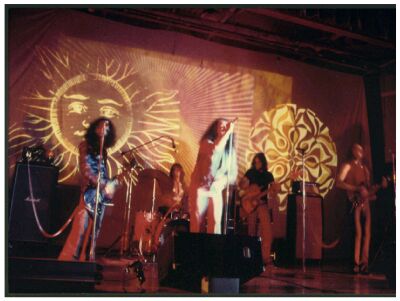 Two of the images seen on the rear screen here are being manipulated by human operators in time with the music. Note at Lower Left, the ultra violet fixture and PAR 38 "anklebuster" floorlight. |
This scene has a red wash with blue highlights and
a white key light illuminating the vocalist.
The rear projections consist of pulsating oils and
moving moire patterns. They are overlaid with static
"sun" and "kaleidoscope" images.
|
Favourite projected effects eventually came to include "Coloured Cloud", the "Catherine Wheel", "Colour Flash", "Kaleidoscope", and "Space Wheel", along with moire patterns and pulsating liquids done on overhead projectors. Some of the patterns and wheels Richard designed himself. These were often hand painted by him using transparent inks and dyes. In addition, he experimented with polarised light as projected through various transparent tapes and plastics. These were adhered to see-through discs in overlapping patterns so as to achieve moving, rainbow-colour highlights on the screen.
He also utilised translucent paints that crystalised upon drying. A 3-dimensional effect was created by him through the usage of thick glass the outside size of a 35-mm, colour slide. By painting on both sides but allowing some transparent or crystalised/translucent areas on each, it permitted images to be seen through the glass. This gave an illusion as if the rear images were quite far behind the front, almost within a cave.
|
Seen in this full-stage photo are a red front wash with a strong red side wash, and green & pink backlighting. The musician at Center Left is lit in yellow during his keyboard break. |
Crunch Queen Elizabeth High School Halifax, Nova Scotia 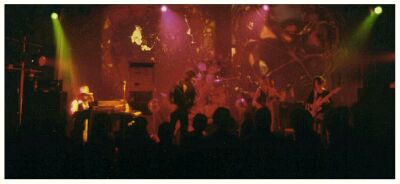 Projections consist of static slides hand-painted by Richard. |
Presaging the trend of projected images on buildings and structures, for a few Halloweens on to a nearby neighbour's house, Richard shone a moving vortex of colour and objects that funnelled down into a central core and disappeared.
This particular house was diagonally across his backyard on an adjacent street. It happened to have no windows on that side and was painted in a medium pink that had faded to a lighter shade. In addition, the streetlight in front of that house did not shine appreciably on to this area, partly because its own pole blocked the light from that direction. Other streetlights were far enough away to not dilute the effect to a point where it could not be seen.
These factors taken together created a fairly shaded, flat, windowless surface that was not too dark to support a visible image. To take maximum advantage of all that, a 500-watt projection unit was placed in a rear bedroom window of Richard's home. It sported a revolving disc upon which Richard had painted shapes or sprayed opaque black around objects such as hardware washers, and then painted transparent colours or crystalline pigments within the result. A special lens made these appear to be condensing and vanishing into a central point as the disc turned.
Even though the angle, distance and corrugated shingles reduced the final intensity, the result looked as if the neighbour's house was swallowing a plethora of coloured shapes.
People walking down the adjacent street after dark saw the kinetic display, but could not tell from where it came due to the projection angle and distance, and because a tree partially concealed the source from view. It was fun for Richard to hear the excited exclamations of passers by as they spotted the unusual sight and stopped to watch.
Richard had an interest in film, so he bought several old 16mm film projectors and added shorts to his projection shows at this time. Several were black & white to which Richard added coloured, diffused or rippled effects by placing motorised coloured or patterned wheels in front of the lenses.
One of the most spectacular was a monochrome film of a water skier that approached the camera. As he passed the lens, water sprayed up in an arc. With a special colour wheel spun in front of the lens, the spray was transformed into a rainbow of colour -- from a black & white film!
In addition, Richard incorporated National Film Board movies into his shows. These films exposed a new generation to Canadian film makers of the 1940s, 50s, 60s, 70s, and 80s. These included the works of Guy Glover, Laurent Coderre, Ryan Larkin, and pioneer animator Norman McLaren. McLaren drew animations right on film stock and also worked in stop-motion techniques of film making. These types of creative arts films were perfect backdrops for live music acts.
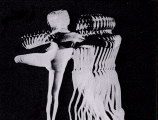
Classic short films and animations such as Carrousel, Cosmic Zoom, Hen Hop, Neighbours, Pas de Deux (seen at the left), Spheres, Street Musique, Walking, and countless others provided visual accompaniment to the bands of the time and kept an audience's attention directed toward the stage.

As an addition during the breaks, Richard would sometimes run 10-minute cartoons, with sound being patched through the band's PA system. Popular 1950s cartoon penguin, Chilly Willy, was a favourite.
One mischievous stunt provided continual comments afterwards when Richard obtained a sex education animation from a local family planning board in Halifax and projected it behind bands (without sound) at a couple of high schools in Dartmouth. The controversy was nullified by the fact that the film was already being used in schools as an aid to sex education. Still, it gained a notoriety that followed him for some years afterwards.
Saint Mary's University
Halifax, Nova Scotia
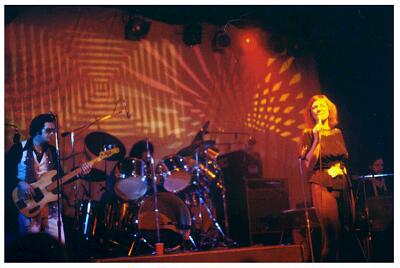
This scene is lit in a blue front wash with Charity in yellow and a red back spot. Behind are moving moire patterns. |
Charity Brown |
|
Charity Brown |
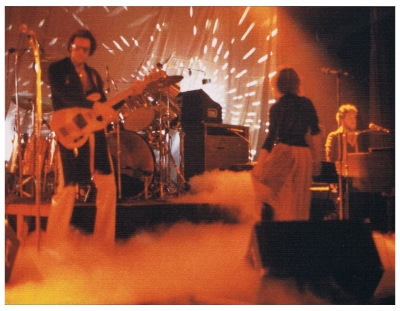
Orange washes the stage while moving mirror ball dots blur on the rear screen. Cooled fog oozes out from beside the raised drum kit and spills on to the stage below. |
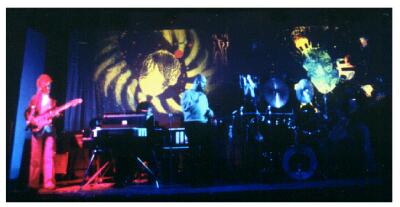 Front and side washes are in ultra-deep blue. A pink key light profiles the guitarist. Seen on the rear screen is a layered projection effect consisting of a space background and two static images. Just visible high on the screen slightly to the right of center are two black & white ballet artists actively dancing among the stars. The shiny panel behind and slightly above the drum kit is a mirror on a stand. It gave the audience members an extra dimension to the band by allowing them to see the drummer from a rear angle. |
Chalice |
|
Here, Wendy Porter and Joanne Yaccato manipulate
patterns or oils on overhead projectors. They are
perched on staging so as to be able to project over
the heads of the audience. Hidden in the darkness
between them are two 16mm motion picture projectors.
|
Projection Techs Charity Brown Show 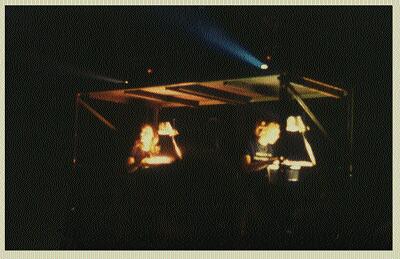 Up top, beams emanate from two of the dozen special effects projectors housed on the second level. The two small red glows are neon power indicators. |
As a side line, Richard began disc jockey work for university fraternities, church youth groups, and private clubs. With a full Electrovoice sound system and sizable projection show consisting of slide, over-head, effect, and 16mm film projectors, he was the only person in the local area to offer such a large set up.
Although other persons were going out playing recorded music in the old-style "sock hop" tradition, Richard was giving the full disc jockey shows we know today before it became the popular thing to do. He still continued with his band lighting during this period, as well.
By the time outdoor concerts became well established, Richard was there to do his part by providing lighting for the major Canadian and International Acts that were increasingly being booked for these types of shows. Throughout this time he was still designing lighting for productions at his former schools as well as for independent theater groups. Also, more and more pageants and fashion shows were being put on, all requiring lighting, and their producers came to Richard.
As projection shows became less popular, high quality stage lighting was the norm, particularly with beam effects, which is the way Richard went. However, he never lost sight of the fact that the lights were there to augment the bands' music, not take over (although there were certainly bands that needed the lighting to take over). His philosophy was (and is) to precisely interpret the music, not only in rhythm, but in mood as well, with each song having its own, distinct appearance. He felt that how the musicians looked on stage came first and foremost over the rest of the show.
As greater numbers of diversified talent came to the Maritimes, Richard Bonner came to work for more international names than in his first two decades combined. A highlight was lighting the official opening of The Halifax Metro Centre and providing special effects. Richard immediately went on to light other shows at this venue including Carroll Baker, Long John Baldry, The Minglewood Band, Natalie Cole, Vera Lynn, Victor Borge, and the Tall Ships Extravaganza. He would later initiate another Maritime venue by doing the first show at the then new Harbour Station in Saint John where he lighted Canadian superstar Gordon Lightfoot.
The Metro Centre
Halifax, Nova Scotia
|
Victor Borge and the Halifax Symphony Orchestra 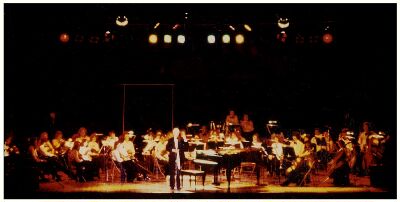 |
|
Long John Baldry |
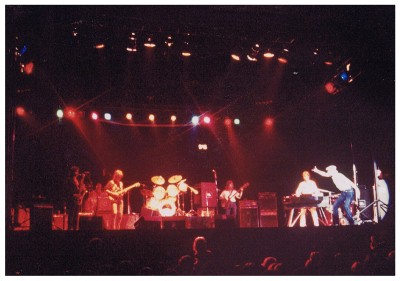 |
![(Image: Matt [at the Hammond Organ] and the Band, as seen from
Behind)](Images/Artists/RB/Mingle-1.jpg) |
The Minglewood Band |
|
The Minglewood Band |
![(Image: Donnie [on Bass] and Bob [on the Drums] with the Band
up Front, as seen from Behind)](Images/Artists/RB/Mingle-2.jpg) |
Although he had done some television lighting early in his career, most notably for the weekly Virginia Foxe Show, this type of work would also increase for him. Many of the bigger stage shows were also being televised, or at least video taped for posterity. The lighting had to be enough for the video camera but this often resulted in a poor look for the people at the venue. Richard however, never compromised what the live audience saw, yet still gave the video crews what they liked. Two of the largest shows he did which were also video taped, were for The National Country Music Week events in Halifax and for another year in Moncton. Richard lighted both the main performance stages and awards shows, and directed the lighting for the live audience and for television. His experience with video lighting would see him light music and promotional videos for a number of musicians and other performers.
Finding a lack of institutions teaching in the rock lighting field, Richard began teaching a basic Rockshow Lighting Course. This 22 hour course taught over five evenings, took aspects of theater, photographic, and television lighting and applied them to the relatively new field of rock band lighting. The course continued to be taught from time to time including abbreviated and full versions presented at the Canadian Conservatory of Music in Halifax, Nova Scotia. These ended in the mid 20-00s. Richard also expanded this to include stage lighting seminars for various theater groups around the Maritimes.
When it became obvious that this was to be Richard's life career, he started a lighting company with the name he had begun using in college: Atlantic Illumination. It started when nightclubs and bands asked to purchase some of the effects he used for their own use. That grew into Richard ordering in effects and lights from Canadian, American and British suppliers, demonstrating them in his own shows, and then selling the equipment to clients. This went well, and in its first decade, his company out grew two warehouses and expanded at a third location to include sales, repair and fabrication sections.
The Misty Moon Cabaret
Halifax, Nova Scotia
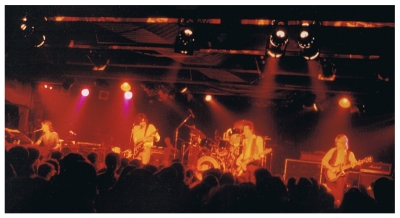 Steppenwolf |
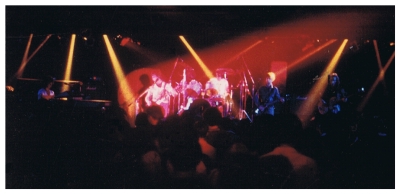 Rick Derringer |
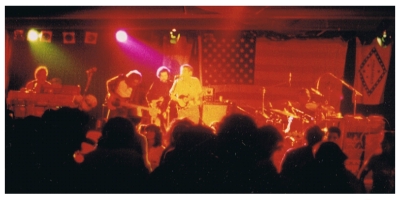 Levon Helm and The Cate Brothers Band |
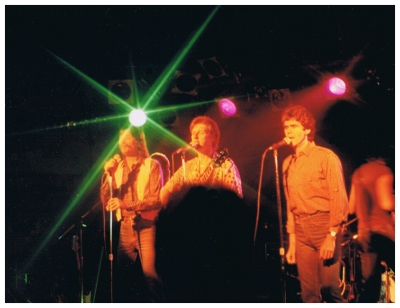 Three-Dog Night |
In the 1990s, Richard was nominated three times for Best Lighting Designer/Technician. Both accolades were given by The Music Industry Association of Nova Scotia (MIANS).
His most visible work in this time period was for The East Coast Music Awards. He designed both the stage and venue lighting for The Olympic Gardens (now Saint Antonio's Olympic Community Centre). He lighted more than 25 acts in four days and personally directed and operated the lighting for both the bands and television production of the event over that period. As well, he was responsible for lighting the media area where each artist was interviewed for later inclusion in the television show.
|
|
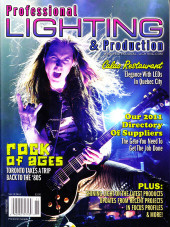
|
An honour in the 2010s was Richard being profiled by magazine Professional Lighting & Production. for its In Focus segment. |
|
|
Also in that same year, The Fantasticks was voted #10 Best in Show for 2010 at The Coast newspaper. See the "Fantastics" Review. Richard designed and directed this production's lighting for Dartmouth Players. For 2011, The Coast voted two productions into their Top Ten Stage Faves: Best of 2011 category for which Richard designed and directed the lighting. These were Rent (#5) for DGM Music and Dartmouth Players' Cabaret (#10). The Coast's 2013 list voted trrrash Productions' Sissydude Best Theatre Production: Bronze, and its 2014 list saw Dartmouth Players production of The Woman in Black make its Top Ten. His lighting for the latter produced a spooky atmosphere for this dark, ghost story. Stage Faves: Best of 2014 For 2016, Theatre Nova Scotia picked the Rocky Horror Show by Rolling Bold Productions as one of its favourites. Richard designed and directed the lighting for this production held in the performance space of the North Street Church, as well as operated the lighting board for all performances. In 2017, Dartmouth Players appointed Richard as the Technical Director of its Sawmill Playhouse. He was also elected to the board of that organisation. |
|||
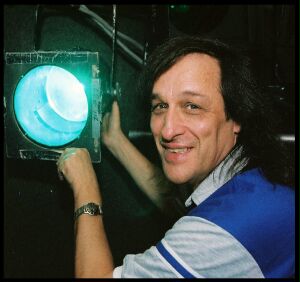
Richard's career continues to be strong. He has provided lighting design & direction for many different talents and for people from many different walks of life. These include acrobats, actors, a former astronaut, athletes, barbershop singers, beauty contestants, burlesque performers, business men & women, chefs, choirs, clowns, comedians, contorionists, dancers, diners, disc jockeys, display designers and artists, draw, paint and craft artists (artisans), escape artists, fashion models, film makers, gospel singers, graduates, gymnasts, hair dressers, hypnotists, jugglers, karaoke singers, keynote speakers, lecturers, magicians, majorettes, marionettists, masters of ceremony, mentalists, musicians, opera singers, performance artists, photographers, police officers, politicians, public lecturers & speakers, puppeteers, radio & television personalities and announcers, rap artists, religious leaders, sculpture artists, show hosts, sign-language interpreters, skaters, sketch-comedy groups, store proprietors, students, stunt contestants, town criers, vocalists, and yes, even Santa Claus!
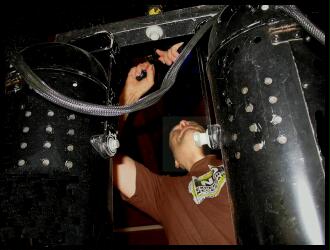
Then there are the objects of those talents: airplanes, architecture, art work, automobiles, beverages, boxing rings, clothing, computers, crafts, electronics, food, ice sculptures and ice surfaces, jewellery, music video sets, paintings, parade floats, photographs, retail shop and market displays, sculptures, stage props, stage sets, table displays, trade show booths, and much, much more.
Within his capacity as a lighting designer/director and also with other aspects of his entertainment career encompassing audio, live recording, film/video, special effects, and general roadie duties, Richard has worked for many clients and in a wide variety of venues.
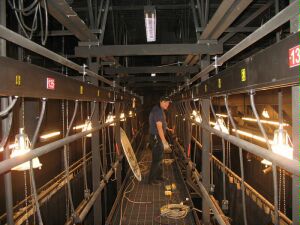
The latter are represented by aircraft hangars, arenas, art galleries, arts centres, atriums, auditoriums, an automobile repair garage, backyards, ballrooms, a Bar Mitzvah, barns, bars, beaches, boat clubs, cafes, cafeterias, cafetoriums, car showrooms, a casino, churches, city streets, a city transit garage, colleges, common rooms, community rooms & halls, country fairs, craft markets, a cruise ship, day-care centres, elementary schools, ethnic cultural centres, exhibitions, indoor and outdoor fields, golf & country clubs, gymnasiums, haunted houses, high schools, hotels, ice surfaces, junior high schools, legion halls, libraries, meeting rooms, middle schools, military air, army and naval bases, a miniature golf course, motion picture sets, motion picture theatres, multi-purpose rooms, museums, nature parks, nightclubs, outdoor stages, offices, paddling clubs, parades, nature parks, performance cultural centres, police clubs, a former pool hall, private, commercial, and military clubs, private and public summer cottages & campgrounds, proms, pubs, recreation centres, research facilities, restaurants, shopping malls, sports facilities, a telephone communications facility, television studios, theatres, tourist resorts, trade show booths & venues, universities, vocational schools, warehouses, wharves, weddings, wedding receptions, yacht clubs, and even at a nuclear power plant!
Richard has been quoted:
I love to do lighting, even after all these years.
I receive
just as much enjoyment with 24 lights at an elementary
school Christmas pageant as I would using 240 lights for a
name act at a large venue. I am proud of my career and of
all the talent for whom I have worked, from basement bands
just starting out on up to the best-known acts and artists.
I have lighted the unknowns, the famous -- and the infamous!
and...
Working with talented people charges my creative
batteries. They inspire me to want to give that extra
bit, which always brings out the best of my abilities.
Even when not working, I love to just hang out with them.
|
Lyteshow Girls at Bonn-Ami Monte's Bar and Grill Dartmouth, Nova Scotia September 2004 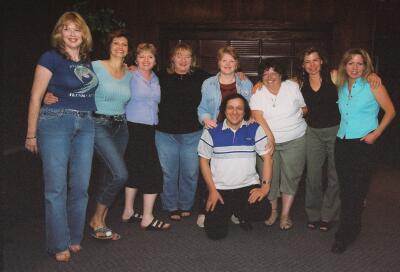 |
|
Richard poses with some of the girls that teched the shows early in his career. From left to right they are Sharon Trotter, Cheryl McLaughlin, Betty Emberly, Wendy Porter, Jo-An Richard, Francine Chart, Lil MacPherson, and Carol Cunningham. Note that the wide angle lens used to take this photo has distorted the view. Sharon isn't really that tall! (-: |
Over the years, Richard has belonged to a number of organisations as a member, and in three cases serving on the executive (E). These have been:
* Atlantic Computer and Gaming Club
* Bedford Players
* Chebucto Community Net
* Chebucto Community Net Technical Committee
* Conjurers's Court
(International Brotherhood of Magicians, Ring 316)
* Dartmouth Players Community Theatre (E)
* 1520 Youth Group (E)
* Halifax Computer Club (E)
* Halifax Magic Club
* Nova Scotia Drama League
* Nova Scotia Linux Users Group
* Royal Astronmical Society of Canada
* Theatre Arts Guild
* Theatre Nova Scotia
Richard's beneficial work has seen him donate lighting and/or his personal time for such events and organisations as B'Nai Brith, The Federation of Nova Scotia Heritage, the Junior League of Halifax, Huntington's Society, St. Andrew's Church, St. James Church, St. Paul's Church, Halifax Homeless, Bicentennial School's 50th Anniversary, The Jeffery Jam (an all-star benefit for musician, Rick Jeffery), a 30-year reunion for former Dartmouth High School students, the Halifax Alta Gymnastics Club fund raiser (of which two of the athletes he lighted competed on Canada's Olympic Team), Dartmouth High School's 50th Anniversary, Creighton Park Community Playground, Concert for Keating Hall, The Silent Wall (AIDS), as well as benefits for the families of Jimmy MacPherson, songwriter/musician Richard Byrne, kayakist Tiffany Tanner, dancer Elizabeth Ryan, and motorbike guru Mike Roach.
More recent charity events were for support of breast cancer survivors, a fund-raiser for The Bella Rose Arts Centre, a benefit for the Kids Help Phone, Head for a Cure fundraiser in the form of the Joel Plaskett Dessert and Concert, Acts for AIDS, the Tallahassee Breakfast Program, Dartmouth Players, one in support of musician Floyd King (who sadly passed away in early 2019), the Charitable Irish Society's annual dinner, and a series of concerts for the Friends of St. Margaret.
Along with charity events, for the past few years Richard's lighting designs and work for various artists and shows have encompassed those for schools and theatrical musicals or plays, live music acts and concerts, dance performers, public speakers, corporate shows and displays, as well as working for magicians, mentalists, and a hypnotist.
Here are some of Richard's most Recent Projects.
Throughout his career, Richard has always liked to
promote and work for Atlantic Provinces talent. He has
illuminated at one time or another some of the least and
best known East Coast acts and artists, the cream of
which went on to national and international recognition.
He continues in that endeavour.
|
Thanks go to photographers Babs Walker, Bob Atkinson, Colin Conrad,
Rick Walker, Shirley Robb, Ully Bleil, and Wendell Coveyduc of the
Halifax-Dartmouth, Nova Scotia area for usage of their photos. Thanks also to Ben Fullerton of Fletcher's Lake, Nova Scotia for the slide scan work, and to Colin Conrad of Dartmouth for photo scan work. |
Links to Richard's Lighting Work
Recent Projects
Artists and Shows
Photo Archive
